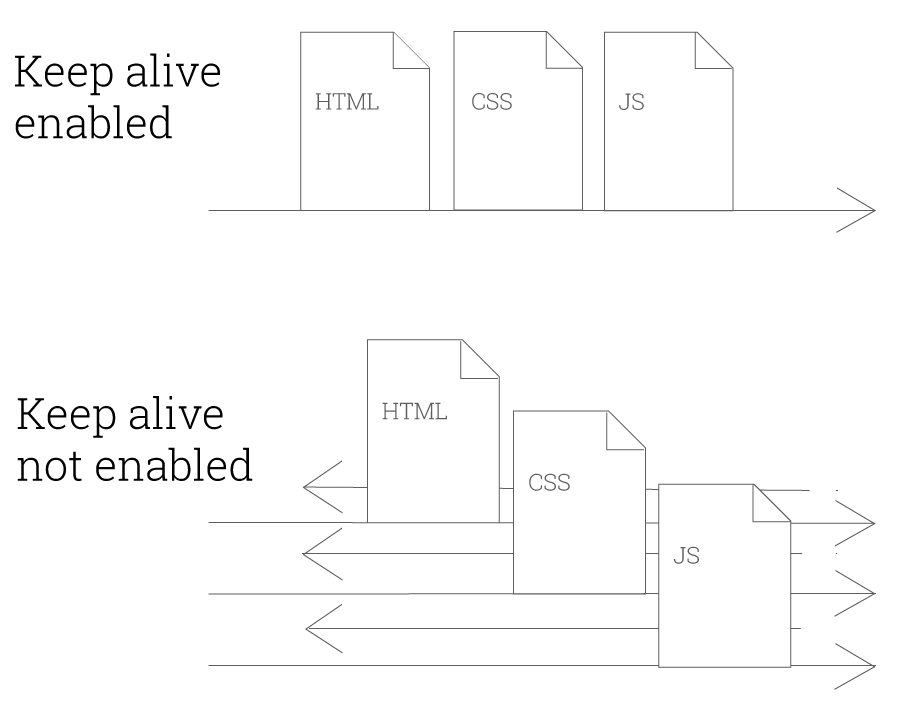What is keep alive?

Keep alive is a method to allow the same tcp connection for HTTP conversation instead of opening a new one with each new request. More simply put, it is a communication between the web server and the web browser that says “you can grab more than just one file at a time”. Keep alive is also known as a persistant connection.
https://varvy.com/pagespeed/keep-alive.html
Advantages of KeepAlive
- Improves website speed: It reduces latency associated with HTTP transfers and delivers a better user experience.
- Reduces CPU usage: On the server side enabling KeepAlive reduces CPU usage. Consider that a typical web page has dozens of different files such as images, stylesheets, javascript files etc. If KeepAlive is disabled a separate connection must be made for each of those files. Creating and closing connections has an overhead and doing it for every single file wastes CPU time.
Disadvantages of Keepalive
- Increases memory usage: Enabling KeepAlive increases memory usage on the server. Apache processes have to keep connections open waiting for new requests from established connections. While they are waiting they are occupying RAM that could be used to service other clients. If you turn off KeepAlive fewer apache processes will remain active. This will lower memory usage and allow Apache to serve more users.
Edit httpd.conf.
vi /etc/httpd/conf/httpd.confEdit the following section – KeepAlive On.
#
# KeepAlive: Whether or not to allow persistent connections (more than
# one request per connection). Set to "Off" to deactivate.
#
KeepAlive On
#
# MaxKeepAliveRequests: The maximum number of requests to allow
# during a persistent connection. Set to 0 to allow an unlimited amount.
# We recommend you leave this number high, for maximum performance.
#
MaxKeepAliveRequests 100
#
# KeepAliveTimeout: Number of seconds to wait for the next request from the
# same client on the same connection.
#
KeepAliveTimeout 100Restart httpd.
/etc/init.d/httpd restart
